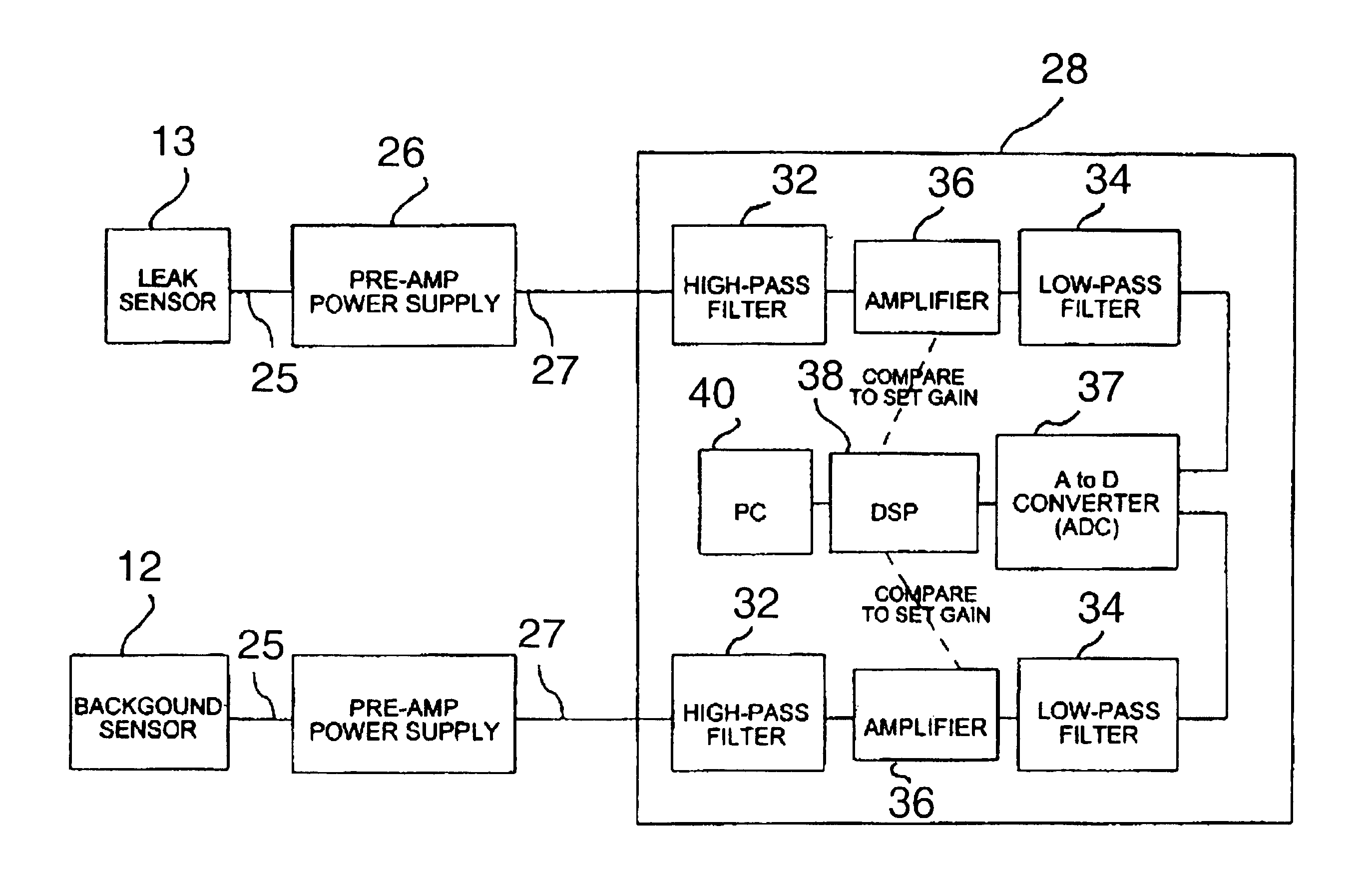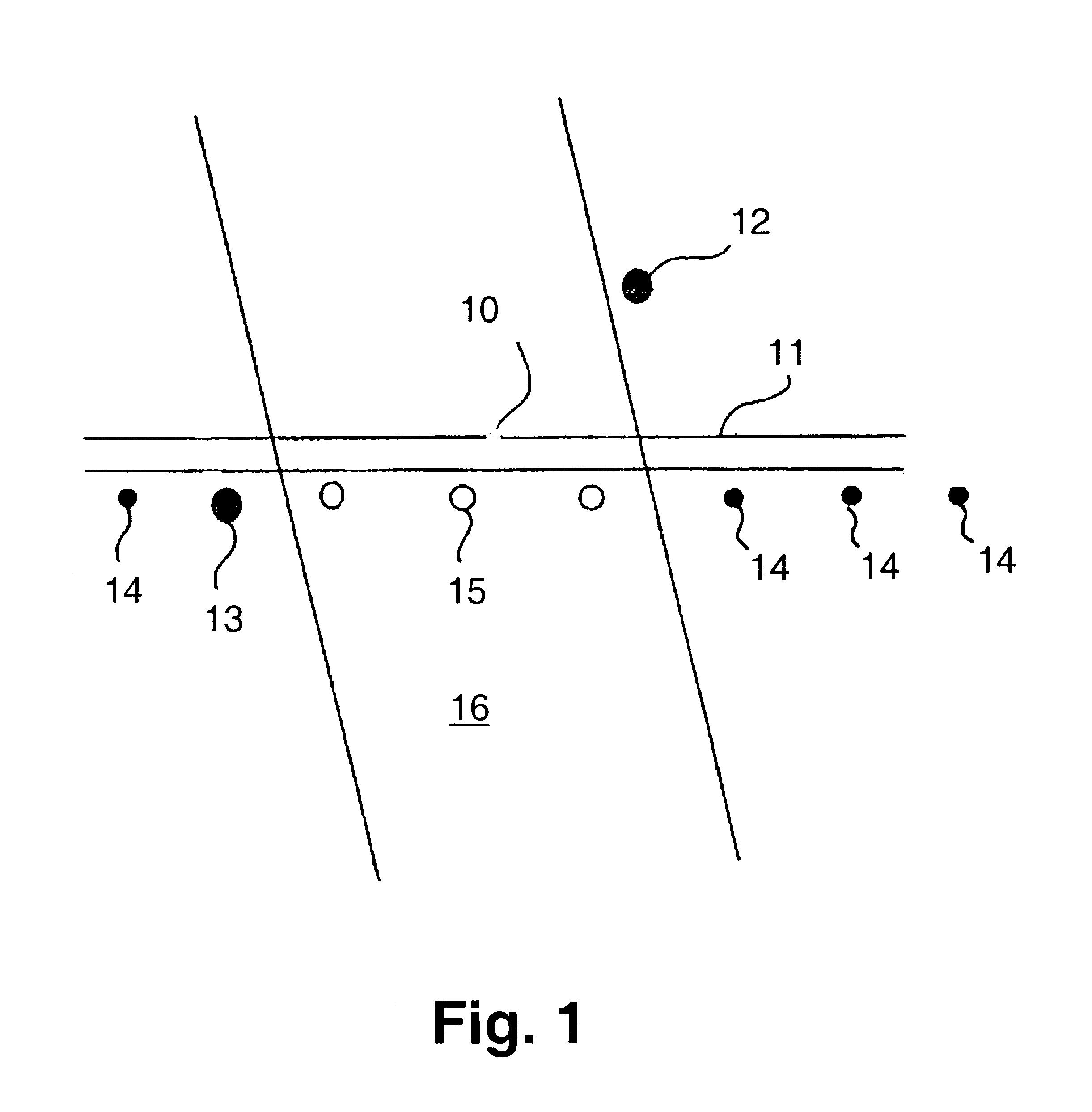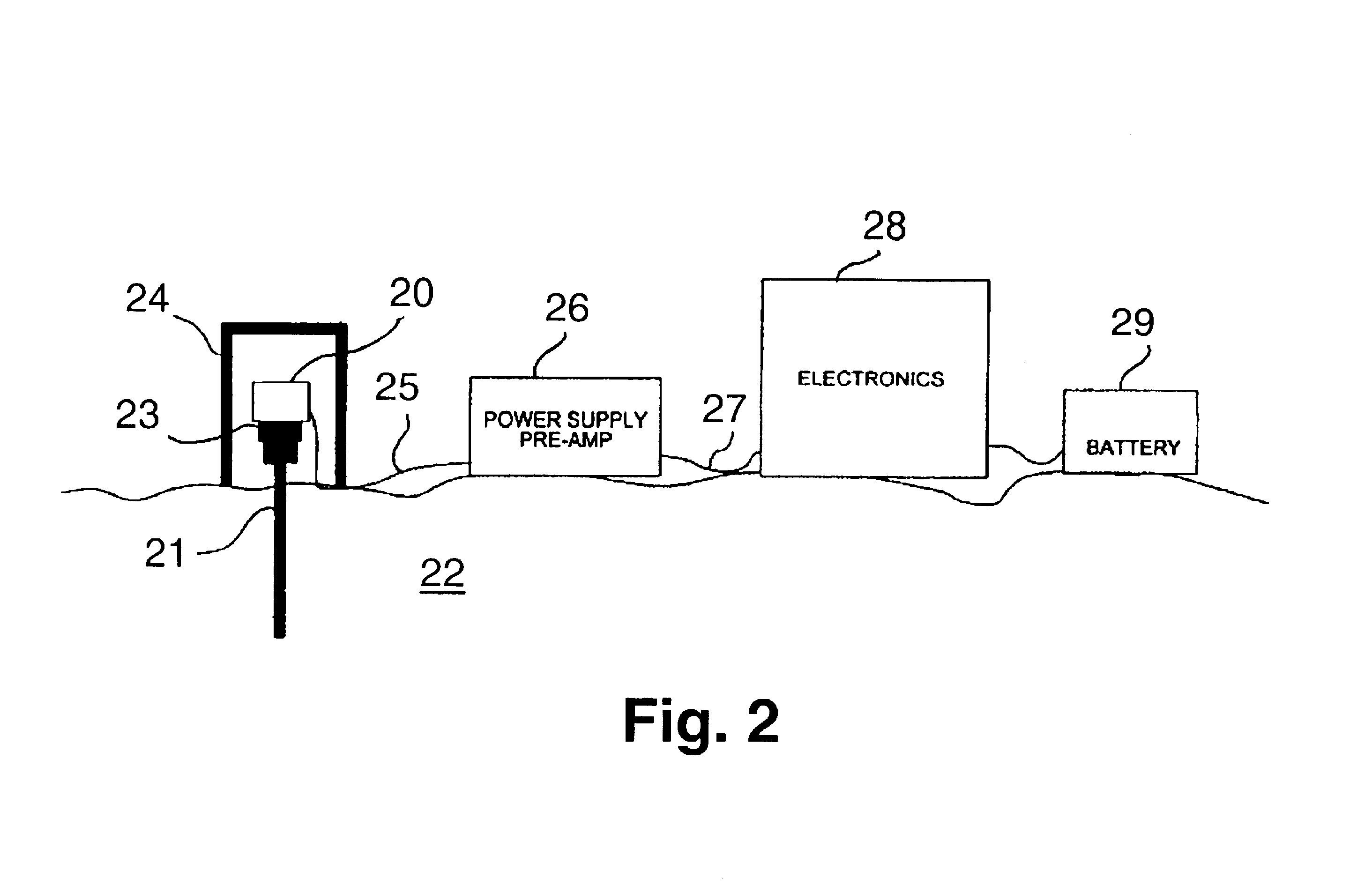Enhanced acoustic detection of gas leaks in underground gas pipelines
a technology of acoustic detection and underground gas pipeline, which is applied in the direction of fluid tightness measurement, instruments, machines/engines, etc., can solve the problems of significant gas leakage from underground gas pipelines, difficult to pinpoint the location of such leakage, and loss of revenues
- Summary
- Abstract
- Description
- Claims
- Application Information
AI Technical Summary
Benefits of technology
Problems solved by technology
Method used
Image
Examples
Embodiment Construction
In accordance with one embodiment of this invention, two acoustic sensors are used to determine the location of gas leaks from underground gas pipelines. Preferred acoustic sensors for use in the method of this invention are selected from the group consisting of accelerometers, including optical fiber accelerometers, velocity sensors, geophones and combinations thereof. Amplifiers employed in the acoustic sensors should be as low as possible in thermal noise. In accordance with a particularly preferred embodiment, an accelerometer having a resonant frequency in the range of about 900 to about 2500 Hz is used. Soil normally attenuates most of the leak sound at frequencies higher than about 3000 Hz. Typically, the accelerometer does not need to be responsive to frequencies below about 100 Hz although, to achieve a minimum noise floor, it may be. Suitable accelerometers for use in this invention may be obtained from Wilcoxon Research, Inc. in Gaithersburg, Md. and PCB Piezotronics in D...
PUM
 Login to View More
Login to View More Abstract
Description
Claims
Application Information
 Login to View More
Login to View More - R&D
- Intellectual Property
- Life Sciences
- Materials
- Tech Scout
- Unparalleled Data Quality
- Higher Quality Content
- 60% Fewer Hallucinations
Browse by: Latest US Patents, China's latest patents, Technical Efficacy Thesaurus, Application Domain, Technology Topic, Popular Technical Reports.
© 2025 PatSnap. All rights reserved.Legal|Privacy policy|Modern Slavery Act Transparency Statement|Sitemap|About US| Contact US: help@patsnap.com



